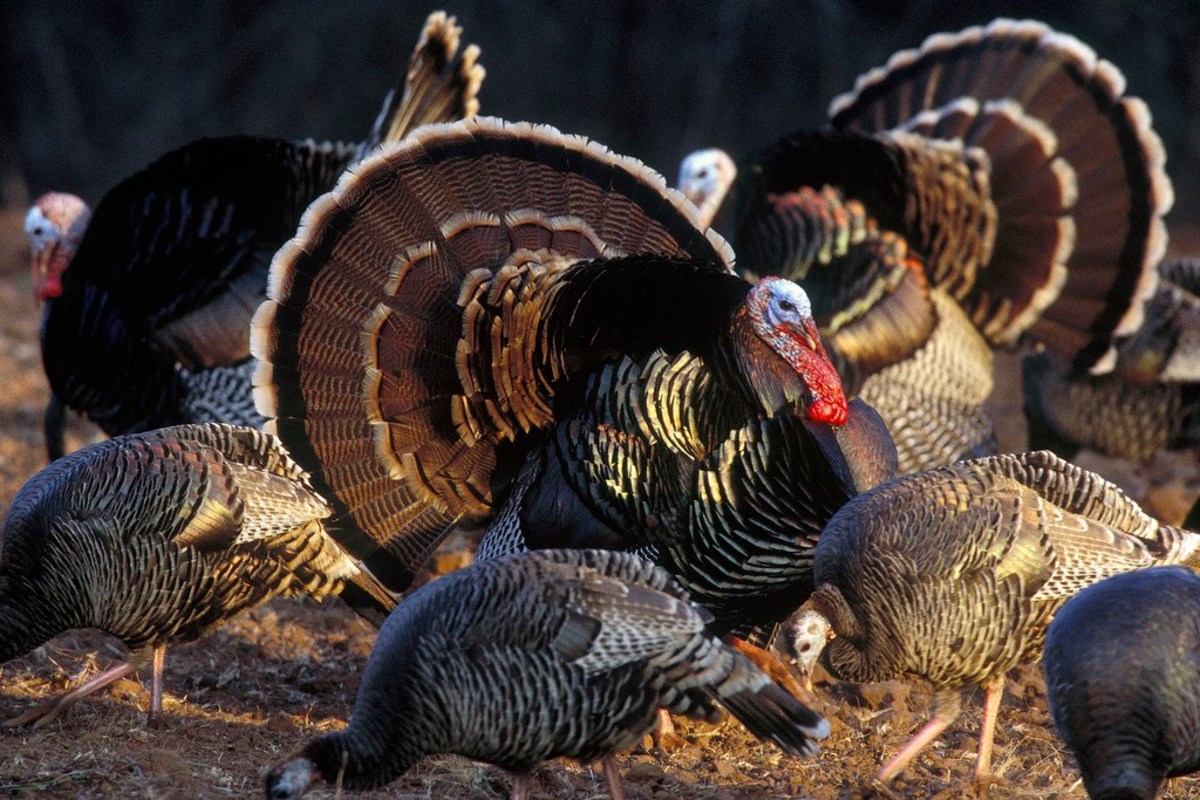
Next to whitetails, wild turkeys are one of the most popular game animals inhabiting the American landscape. Turkey numbers have soared across the country over the past few decades due in large part to the hunter-based conservation efforts of the National Wild Turkey Federation and more people are hitting the woods in search of this tasty game bird. Despite the wild turkey’s widespread popularity, some hunters may not be aware that Meleagris gallopavo has some peculiarities that impact their habitat as well as other wildlife.
The wild turkey’s diet consists mainly of vegetation and insects and they’re happy to take advantage of waste grains in agriculture fields. Acorns, dandelions and grasshoppers are common food items but turkeys are very adaptable and their diet is much more varied than many of us realize. A few years ago, after shooting a gobbler in Colorado I noticed the bird’s crop was bulging and made noticeable clicking sounds while I was hauling the tom out of the woods. Upon further examination, the bird had consumed a few dozen small snails.
Wild turkeys may have as much in common with bears and raccoons as grouse and pheasants, and they’ll eat just about anything. Willing to chase down bigger and livelier prey than snails, they have been observed eating snakes, frogs, mice and even hunting small fish. Bird eggs and carrion are also occasionally scavenged. This incredible flexibility in their diet is partly responsible for their success as a species. Because they’ll eat whatever is available and they are capable of scraping by through droughts and harsh winters it is possible we’re getting close to reaching peak turkey populations in many areas of the country.
Population growth rates have been steadily climbing for many years as turkeys have expanded their range into new habitats but those numbers may now be leveling off in portions of their range. Part of this increase can be attributed to turkeys reestablishing themselves in areas where they had been all but eliminated, while some growth is the result of successful introductions into habitats that never had natural wild turkey populations. It’s now more than likely that the carrying capacity of any given piece of habitat is as much a factor for wild turkeys as it is for larger game animals like deer.
These peak populations of our largest game bird lead to the question of how flocks of these adaptable birds affect the environment around them. For example, evidence suggests that too many turkeys significantly hinder oak tree regeneration as they scratch up leaf litter destroy seedlings. Is it possible turkeys impact smaller game birds such as quail or grouse, in the same way elk outcompete mule deer on winter range? It might be.
This spring, take the time to observe the feeding habits of wild turkeys and if you are successful in tagging a gobbler, check the contents of its crop. You might find something unexpected and at the very least you’ll learn something that will help you become a better turkey hunter. Also, try to look beyond the hunt itself and consider how these big birds interact with the landscape and other wildlife.
For more information on the odd habits of wild turkeys read this article: http://blog.nature.org/science/2016/11/21/turkeys-eat-diet-weird-adaptable-peak-thanksgiving/
Brody Henderson is a hunter, fly fishing guide, writer, wilderness production assistant for the MeatEater television show and MeatEater‘s editorial contributor.






